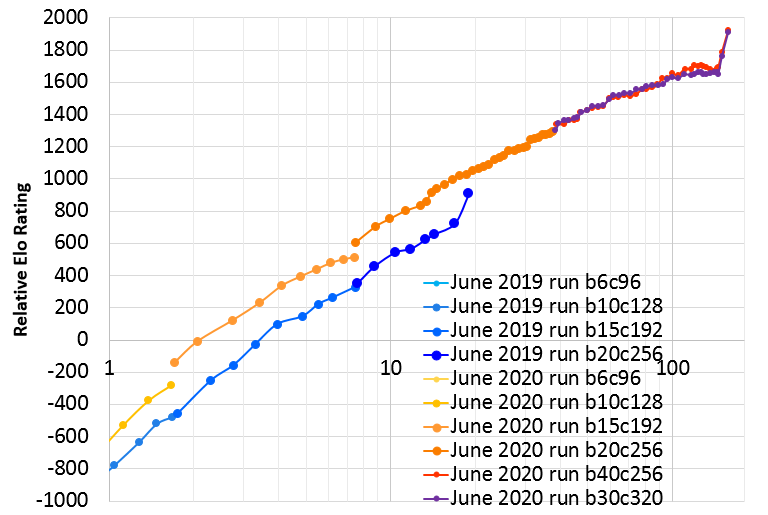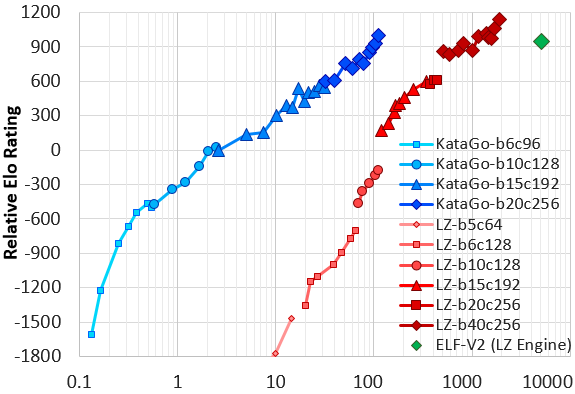
 |
| X axis is days of training, log scale. (note: hardware is about the same but not entirely identical). Y axis is relative Elo rating based on some 1200-visit test matches. The abrupt jump at the end of the June 2019 run is due to a LR drop in that run that the current run, gradually, still has only partially applied. |
 |
| June run of KataGo vs LZ and ELF. X axis is approx selfplay compute spent, log scale. Y axis is relative Elo rating. Leela Zero goes up to LZ225 on this graph. KataGo trains efficiently compared to other bots. See paper for details. |